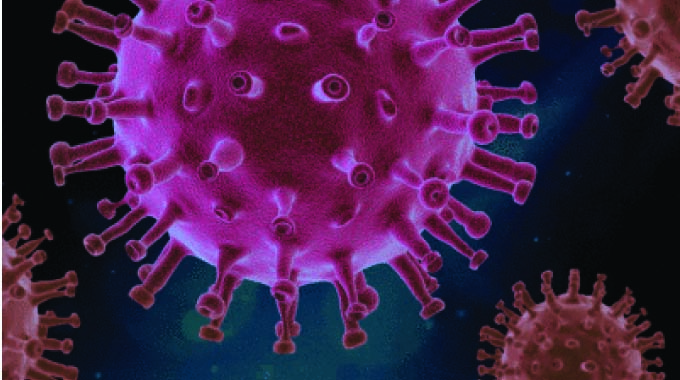
The Sunday News

Simba Jemwa, Features Correspondent
WELL-FLAVOURED with molasses sugar or fruit like apple, plum, coconut, mango, mint, strawberry, which makes the smoke more aromatic than cigarette smoke, but the dangers of smoking shisha is increasing by the day as more teenagers descend into the cesspool of addiction.
The lust for shisha is hardly a joke in modern Zimbabwe as young locals, mostly teenagers, become addicts.
For young girls, as young as 13 years, smoking shisha is always a thing to try after discussion with peers and they don’t care going any length to have a feel of it.
Amid warnings from global health bodies like World Health Organisation (WHO), young smokers are not deterred. A single hookah is enough for a group of 10 to smoke tobacco to their satisfaction.

World Health Organisation (WHO)
Some smokers claim shisha is good to keep the body warm during the cold. But in all weather, the smoking instrument is not far from teenage-smokers in Zimbabwe.
A shisha is a water pipe used to smoke tobacco.
It is also called a hookah, hubble-bubble and narghile. The word “hookah” refers to the pipe, not the content of the pipe.
It was invented hundreds of years ago in the Middle East. Today, hookah smoking is also popular in the United States, Europe, and around the world.
According to WHO, the volume of smoke inhaled in an hour-long shisha session is estimated to be equivalent to smoking between 100 and 200 cigarettes.
Firstly, the top two most common reasons shared by teens for smoking shisha are that it is trendy while others just want to have a feel of it, implying its popularity among nightclub patrons.
It appears that shisha smoking has become a contextual norm in nightclubs in Zimbabwe. The trend cuts across adolescents and the older population.
Findings show that shisha smokers are not limited to men but include female teenagers, undergraduates and high school learners.
Most of the country’s urban centres have shown a very high incidence of addiction to shisha among the youth.
The relative cheapness and accessibility of youths to shisha items make it easy for them to acquire them.
For instance, a small pack of fruit-flavoured tobacco sells at between US$5 and US$10 or more depending on where the users are buying it from, while the cost of smoking shisha at a bar varies depending on the location and associative drugs used to spice the stash.
When this reporter visited a lounge ‘as a customer,’ it was discovered that many teenage girls with their boyfriends patronise the place taking shisha. It was also observed that users tend to expose themselves to dangerous diseases.
It’s a common trend in most nightclubs and shisha joints to see youth sharing shisha pots and pipes among five to even eight persons. The smoking equipment is rarely cleaned before being passed from one user to the other.
In current times of Covid-19 pandemic, this could be very dangerous and users may contract such deadly diseases in that manner.

Covid-19
Speaking on why she cannot resist smoking shisha, Blessing Nyathi said shisha gives her joy and charges her for the evening. Asked if she was aware of the health implication of smoking shisha, she said even those who never smoke were sometimes got lung cancer.
‘’If I should die today. I believe that it is God’s plan for my life. But I won’t die now by God’s grace,’’ she said.
Speaking to a local club owner who asked not to be named, he said a mixture of shisha goes for US$10 at his spot.
He said the prices of shisha pots are dependent on the source. The club owner said the imported pots are more expensive, stressing that this is because they depict class and sophistication of the user.
A pharmacist, Ken Mlotshwa described shisha or hookah as an instrument for vapourising flavored tobacco, cannabis or opium where the vapour or smoke is passed through a water basin before inhalation.
“Shisha contains 36 times more tar, 15 times more carbon monoxide, 70 percent more nicotine and other harmful chemicals than cigarettes.”
Recent research, as published in the journal of the Royal College of Physicians identified shisha as a potential public health threat.
“Shisha smoke contains high levels of polycyclic aromatic hydrocarbons (known to be carcinogenic), volatile aldehydes (which have been found to cause various respiratory disorders and leukemia).
Elevated blood levels of carbon monoxide have been found in shisha smokers. The carbon monoxide binds to haemo in the blood, thereby reducing supply of oxygen to the body. This may cause loss of consciousness, headaches, shortness of breath etc.”
The pharmacist continued: “Shisha smoking increases risks of hepatitis, herpes and tuberculosis from sharing of shisha mouth piece. There is also the risk of lung, bladder and oral cancers. Shisha smoking has also been found to cause weight gain, which is a risk factor for many diseases, such as type two diabetes mellitus.
“Shisha smoking can be addictive. It is worthy to note that water is not a filter for the toxic chemicals found in shisha. In fact, the presence of water will encourage the growth of microorganisms as microorganisms grow better in moist environment.”
He added: “Cleanliness of shisha pipes is usually called to question as the inside of the pipes are usually difficult to clean. There is no safety even in tobacco-free shisha.
Sometimes, the so-called tobacco free shisha contains even more toxins than the tobacco containing shisha. Shisha may smell fruity, making it look like the proverbial gold-less glitter.”
A medical practitioner who spoke on condition of anonymity for professional reasons said the effect of the product shows that shisha smoking has emerged as a prevalent public health issue in Zimbabwe. He says contrary to the general belief, the uranium that is inhaled will most likely damage kidneys rather than lungs adding that there is a need for an immediate response from policy intervention towards shisha smoking in Zimbabwe.
Unlike cigarette smoking, statistics show that there is no gender or age difference in the rate of shisha smoking.
However, findings show that shisha smoking is now rampant and addicted users have graduated from visiting nightclubs and shisha bars to ownership of shisha paraphernalia in their homes.
The doctor who spoke to this publication notes that hookah smoking is slightly higher among college students, with about 22 percent to 40 percent having tried it. This might be because it’s typically a group event and done in shisha bars, house parties, or bar lounges.
A hookah is made up of a rubber hose, pipe, bowl, and smoke chamber. Tobacco is heated on coal or charcoal, and it may have flavors added to it, like apple, mint, licorice, or chocolate.
A common myth is that hookah smoking is safer than cigarette smoking which the medical fraternity believes to be untrue.
Hookah smoking won’t get you high, but it does have other health risks and can be addictive.
@RealSimbaJemwa



